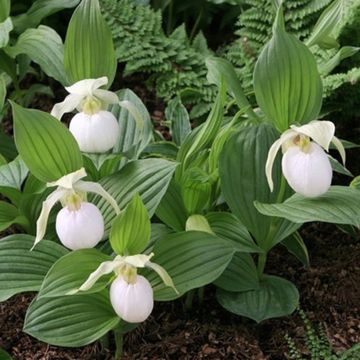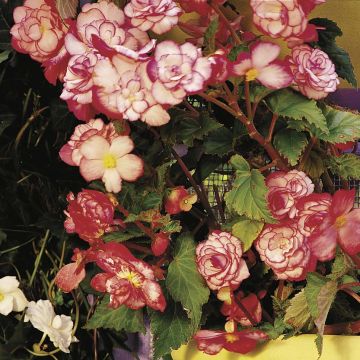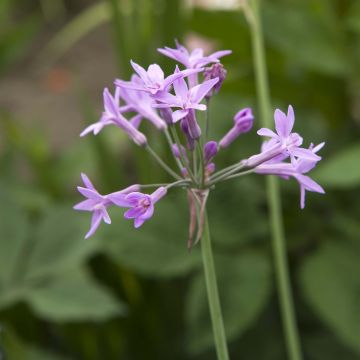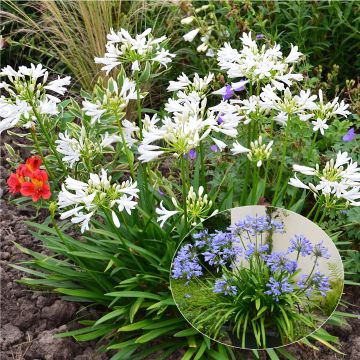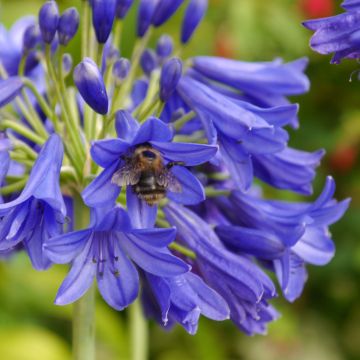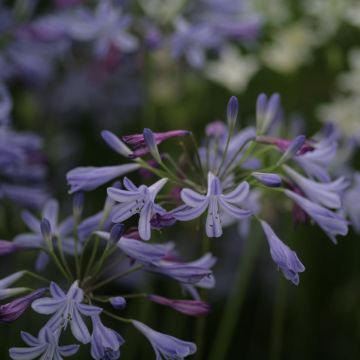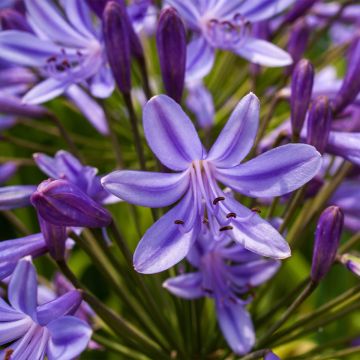Shipping country and language
Your country of residence may be:
Your country of residence is:
For a better user experience on our website, you can select:
Your shipping country:
-
Andorra
-
Austria
-
Belgium
-
Bulgaria
-
Canada
-
Chile
-
Croatia
-
Cyprus
-
Czechia
-
Denmark
-
Estonia
-
Finland
-
France
-
Germany
-
Greece
-
Hungary
-
Iceland
-
Ireland
-
Italy
-
Latvia
-
Lithuania
-
Luxembourg
-
Malta
-
Monaco
-
Netherlands
-
Poland
-
Portugal
-
Romania
-
Slovakia
-
Slovenia
-
Spain
-
Sweden
-
Switzerland
-
United Kingdom
We only deliver seed and bulb products to your country. If you add other products to your basket, they cannot be shipped.
Language:
-
French
-
German
-
Spanish
-
English
-
Italian
My Account
Hello
My wish lists
Log in / Register
Existing customer?
New customer?
Create an account to track your orders, access our customer service and, if you wish, make the most of our upcoming offers.


Lycoris radiata - Lis araignée rouge
Lycoris radiata - Red Spider Lily
Lycoris radiata
Red Spider Lily, Hell Flower, Red Magic Lily, Hurricane Lily
Bulbs in good condition, they all sprouted. However, after three years, I haven't had anything except leaves (no stems), and I wonder what is causing this? Is it a rare flowering?
Lys, 09/12/2024
Order in the next for dispatch today!
Dispatch by letter from 3,90 €.
Delivery charge from 5,90 € Oversize package delivery charge from 6,90 €.
More information
This item is not available in your country.
Shipping country:
-
Andorra
-
Austria
-
Belgium
-
Bulgaria
-
Canada
-
Chile
-
Croatia
-
Cyprus
-
Czechia
-
Denmark
-
Estonia
-
Finland
-
France
-
Germany
-
Greece
-
Hungary
-
Iceland
-
Ireland
-
Italy
-
Latvia
-
Lithuania
-
Luxembourg
-
Malta
-
Monaco
-
Netherlands
-
Poland
-
Portugal
-
Romania
-
Slovakia
-
Slovenia
-
Spain
-
Sweden
-
Switzerland
-
United Kingdom
Schedule delivery date,
and select date in basket
This plant carries a 6 months recovery warranty
More information
We guarantee the quality of our plants for a full growing cycle, and will replace at our expense any plant that fails to recover under normal climatic and planting conditions.
From 5,90 € for pickup delivery and 6,90 € for home delivery
Express home delivery from 8,90 €.
Would this plant suit my garden?
Set up your Plantfit profile →
Description
Lycoris radiata, also known as Spider Lily, Japanese Lily or Red Spider Lily, is a bulb of Chinese origin, often planted in Japanese gardens but less common in Western gardens, perhaps due to its low frost resistance. It is a robust plant in warm climates, less demanding than its cousin Nerine bowdenii, to which it bears a resemblance with its large spider-like flowers. This plant develops its foliage in winter and blooms in late summer or early autumn, with large bright red flowers with very wavy petals and long stamens curving upwards. It is well adapted to Mediterranean climates and South Atlantic coasts, but it is essential to grow this Japanese Amaryllis in pots that you can shelter during the winter if you live further north.
Lycoris radiata is a plant of the amaryllidaceae family, just like nerines, snowdrops and daffodils. Originally from China, it arrived in Japan a long time ago and became naturalised in the southern part of the country where it thrives around rice fields, on the side of roads or along watercourses. This herbaceous plant has a large elongated bulb (3 cm (1in) wide by 5 to 6 cm (2in) high) covered with a brown skin. Its growth occurs in winter. It first produces flowers in September-October. It reproduces vegetatively by producing bulblets on the periphery of the mother bulb but does not produce seeds. In late summer, for 2 to 3 weeks, the plant produces flower stalks about 55 cm (22in) tall, bearing an umbel of 3 to 10 flowers composed of 6 narrow petals, wavy on the edges and curving backwards. The heart of the flower is adorned with very long, upward-curving bright red stamens. This bright red colour fades to light red or salmon pink over a few days. After flowering, tufts of ribbon-like leaves appear, about 20 cm (8in) long and 1 cm (0in) wide. The leaves die off at the end of spring and the bulb remains dormant until the end of summer. During this summer dormancy period, the bulb must be protected from excessive moisture and should not be disturbed once it is established.
Lycoris flowers make excellent cut flowers and have a good vase life. In southern regions, they can be planted alongside nerines, agapanthus and Amaryllis belladonna in well-drained soil and a warm exposure, but they should be given partial shade under a light woodland or the shelter of a large deciduous bush as they are sensitive to intense sunlight. All of these plants, which are easy to grow in large pots, can be used as focal points on a terrace in an exotic or contemporary style.
Report an error about the product description
Lycoris radiata - Red Spider Lily in pictures




Plant habit
Flowering
Foliage
Botanical data
Lycoris
radiata
Amaryllidaceae (Liliaceae)
Red Spider Lily, Hell Flower, Red Magic Lily, Hurricane Lily
East Asia
Other Summer bulbs A to Z
Planting and care
When planted 3 to 5cm (1 to 2in) deep, close to the soil surface, 8cm (3in) apart in partial shade, the bulbs are hardy to -5°C (23°F) in well-drained soil, even though the hardiness of this species is not established in European climates. While the bulb withstands the cold very well, it is the evergreen leaves that must not be destroyed by intense frost, otherwise, the bulb will quickly weaken. Some gardeners believe that in a well-sheltered location, against a wall or under the cover of deciduous bushes, where the foliage is not exposed to temperatures below -5°C (23°F), it is possible to grow this Japanese amaryllis in the ground. It is, however, clearly established that the bulbs need a summer dormancy period, in dry soil and under a hot climate. They should be planted in light, humus-rich, low in limestone and well-drained soil, a woodland soil is perfect. If water is lacking during the flowering period, the plant will go into dormancy again. It will wait for the return of rain to produce later and much less spectacular flowers. This lycoris does not tolerate dividing very well and its bulb does not like being disturbed. It is not uncommon for there to be no flowers the year after planting or division.
Planting period
Intended location
Care
-
, onOrder confirmed
Reply from on Promesse de fleurs
Bulbs to grow in pots
Haven't found what you were looking for?
Hardiness is the lowest winter temperature a plant can endure without suffering serious damage or even dying. However, hardiness is affected by location (a sheltered area, such as a patio), protection (winter cover) and soil type (hardiness is improved by well-drained soil).

Photo Sharing Terms & Conditions
In order to encourage gardeners to interact and share their experiences, Promesse de fleurs offers various media enabling content to be uploaded onto its Site - in particular via the ‘Photo sharing’ module.
The User agrees to refrain from:
- Posting any content that is illegal, prejudicial, insulting, racist, inciteful to hatred, revisionist, contrary to public decency, that infringes on privacy or on the privacy rights of third parties, in particular the publicity rights of persons and goods, intellectual property rights, or the right to privacy.
- Submitting content on behalf of a third party;
- Impersonate the identity of a third party and/or publish any personal information about a third party;
In general, the User undertakes to refrain from any unethical behaviour.
All Content (in particular text, comments, files, images, photos, videos, creative works, etc.), which may be subject to property or intellectual property rights, image or other private rights, shall remain the property of the User, subject to the limited rights granted by the terms of the licence granted by Promesse de fleurs as stated below. Users are at liberty to publish or not to publish such Content on the Site, notably via the ‘Photo Sharing’ facility, and accept that this Content shall be made public and freely accessible, notably on the Internet.
Users further acknowledge, undertake to have ,and guarantee that they hold all necessary rights and permissions to publish such material on the Site, in particular with regard to the legislation in force pertaining to any privacy, property, intellectual property, image, or contractual rights, or rights of any other nature. By publishing such Content on the Site, Users acknowledge accepting full liability as publishers of the Content within the meaning of the law, and grant Promesse de fleurs, free of charge, an inclusive, worldwide licence for the said Content for the entire duration of its publication, including all reproduction, representation, up/downloading, displaying, performing, transmission, and storage rights.
Users also grant permission for their name to be linked to the Content and accept that this link may not always be made available.
By engaging in posting material, Users consent to their Content becoming automatically accessible on the Internet, in particular on other sites and/or blogs and/or web pages of the Promesse de fleurs site, including in particular social pages and the Promesse de fleurs catalogue.
Users may secure the removal of entrusted content free of charge by issuing a simple request via our contact form.
The flowering period indicated on our website applies to countries and regions located in USDA zone 8 (France, the United Kingdom, Ireland, the Netherlands, etc.)
It will vary according to where you live:
- In zones 9 to 10 (Italy, Spain, Greece, etc.), flowering will occur about 2 to 4 weeks earlier.
- In zones 6 to 7 (Germany, Poland, Slovenia, and lower mountainous regions), flowering will be delayed by 2 to 3 weeks.
- In zone 5 (Central Europe, Scandinavia), blooming will be delayed by 3 to 5 weeks.
In temperate climates, pruning of spring-flowering shrubs (forsythia, spireas, etc.) should be done just after flowering.
Pruning of summer-flowering shrubs (Indian Lilac, Perovskia, etc.) can be done in winter or spring.
In cold regions as well as with frost-sensitive plants, avoid pruning too early when severe frosts may still occur.
The planting period indicated on our website applies to countries and regions located in USDA zone 8 (France, United Kingdom, Ireland, Netherlands).
It will vary according to where you live:
- In Mediterranean zones (Marseille, Madrid, Milan, etc.), autumn and winter are the best planting periods.
- In continental zones (Strasbourg, Munich, Vienna, etc.), delay planting by 2 to 3 weeks in spring and bring it forward by 2 to 4 weeks in autumn.
- In mountainous regions (the Alps, Pyrenees, Carpathians, etc.), it is best to plant in late spring (May-June) or late summer (August-September).
The harvesting period indicated on our website applies to countries and regions in USDA zone 8 (France, England, Ireland, the Netherlands).
In colder areas (Scandinavia, Poland, Austria...) fruit and vegetable harvests are likely to be delayed by 3-4 weeks.
In warmer areas (Italy, Spain, Greece, etc.), harvesting will probably take place earlier, depending on weather conditions.
The sowing periods indicated on our website apply to countries and regions within USDA Zone 8 (France, UK, Ireland, Netherlands).
In colder areas (Scandinavia, Poland, Austria...), delay any outdoor sowing by 3-4 weeks, or sow under glass.
In warmer climes (Italy, Spain, Greece, etc.), bring outdoor sowing forward by a few weeks.


